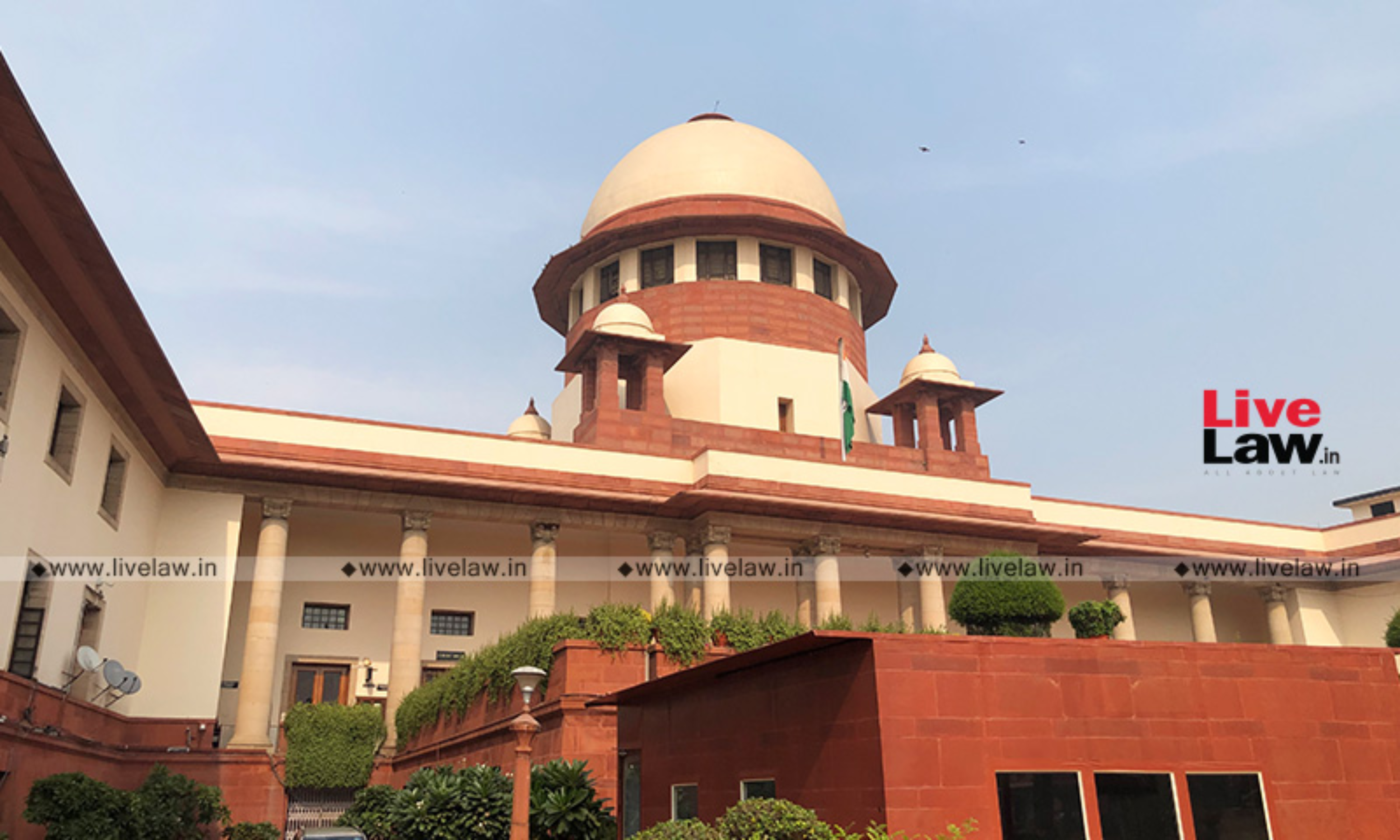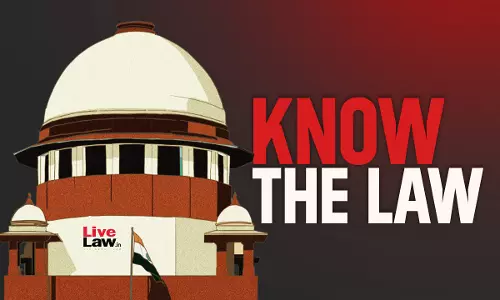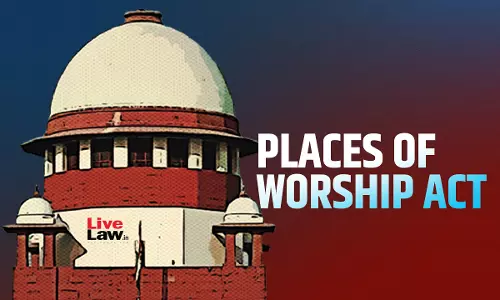Final Report Not Substantive Piece Of Evidence But A Collective Opinion Of Investigating Officer: Supreme Court

The Supreme Court observed that a final report cannot be termed as a substantive piece of evidence being nothing but a collective opinion of the investigating officer.Even assuming that the investigating officer has not deposed before the court or has not cooperated sufficiently, an accused is not entitled for acquittal solely on that basis, when there are other incriminating evidence...
The Supreme Court observed that a final report cannot be termed as a substantive piece of evidence being nothing but a collective opinion of the investigating officer.
Even assuming that the investigating officer has not deposed before the court or has not cooperated sufficiently, an accused is not entitled for acquittal solely on that basis, when there are other incriminating evidence available on record, the bench comprising Justices Sanjay Kishan Kaul and MM Sundresh observed.
The court added that the evidence of the investigating officer is not indispensable, but required for corroboration and contradiction of the other material witnesses.
In a judgment passed last week, the Supreme Court discussed the evidentiary value of a Final Report. The court was addressing the contention of the accused- appellants that that the investigating officer could not be cross examined further with respect to the injuries and the recoveries. In this context, the court observed:
"Section 173(2) of the CrPC calls upon the investigating officer to file his final report before the court. It being a report, is nothing but a piece of evidence. It forms a mere opinion of the investigating officer on the materials collected by him. He takes note of the offence and thereafter, conducts an investigation to identify the offender, the truth of which can only be decided by the court. The aforesaid conclusion would lead to the position that the evidence of the investigating officer is not indispensable. The evidence is required for corroboration and contradiction of the other material witnesses as he is the one who links and presents them before the court. Even assuming that the investigating officer has not deposed before the court or has not cooperated sufficiently, an accused is not entitled for acquittal solely on that basis, when 16 there are other incriminating evidence available on record."
The court, therefore, while dismissing the appeals, observed:
"It is very unfortunate that the investigating officer could not be produced despite the best efforts made. The reason is obvious. There are three investigating officers. The other two investigating officers have been examined including for the charge under the Arms Act. PW-13, the first investigating officer, has been examined in extenso during cross examination. It is only for the further examination he turned turtle. That per se would not make the entire case of the prosecution bad is law particularly when the final report itself cannot be termed as a substantive piece of evidence being nothing but a collective opinion of the investigating officer."
Case name | Rajesh Yadav vs State of UP |
Citation | 2022 LiveLaw (SC) 137 |
Case no.|date | CrA 339-340 OF 2014 | 6 Feb 2022 |
Coram | Justices Sanjay Kishan Kaul and MM Sundresh |
| Caselaw (Headnotes) | Criminal Trial - Long adjournments being given after the completion of the chief examination, only helps the defense to win them over at times, with the passage of time - The trial courts shall endeavor to complete the examination of the private witnesses both chief and cross on the same day as far as possible - The trial courts to take up the examination of the private witnesses first, before proceeding with that of the official witnesses. (Para 39) Code of Criminal Procedure, 1973 - Section 173(2)- Evidentiary Value of a Final Report - Final Report, is nothing but a piece of evidence. It forms a mere opinion of the investigating officer on the materials collected by him. He takes note of the offence and thereafter, conducts an investigation to identify the offender, the truth of which can only be decided by the court- The final report itself cannot be termed as a substantive piece of evidence being nothing but a collective opinion of the investigating officer (Para 25, 37) Criminal Trial- The evidence of the investigating officer is not indispensable. The evidence is required for corroboration and contradiction of the other material witnesses as he is the one who links and presents them before the court - Even assuming that the investigating officer has not deposed before the court or has not cooperated sufficiently, an accused is not entitled for acquittal solely on that basis, when there are other incriminating evidence available on record. ((Para 25) Indian Evidence Act, 1872 - Section 3- Definition of "Evidence"- Factor or material, lending a degree of probability through a logical inference to the existence of a fact. (Para 12) Indian Evidence Act, 1872 -Evidence Act is an "Adjective Law" highlighting and aiding substantive law- It is neither wholly procedural nor substantive, though trappings of both could be felt. (Para 12) Indian Evidence Act, 1872 - Definition of "Proved" - The definition of the word "proved" though gives an impression of a mere interpretation, in effect, is the heart and soul of the entire Act. This clause, consciously speaks of proving a fact by considering the "matters before it". The importance is to the degree of probability in proving a fact through the consideration of the matters before the court. What is required for a court to decipher is the existence of a fact and its proof by a degree of probability, through a logical influence. (Para 13) Indian Evidence Act, 1872 - "Matters" - Matters are necessary, concomitant material factors to prove a fact. All evidence would be "matters" but not vice versa. In other words, matters could be termed as a genus of which evidence would be a species. Matters also add strength to the evidence giving adequate ammunition in the Court's sojourn in deciphering the truth. Thus, the definition of "matters" is exhaustive, and therefore, much wider than that of "evidence". However, there is a caveat, as the court is not supposed to consider a matter which acquires the form of an evidence when it is barred in law. Matters are required for a court to believe in the existence of a fact - Matters do give more discretion and flexibility to the court in deciding the existence of a fact. Indian Evidence Act, 1872 - Classification of evidence - circumstantial evidence, corroborative evidence, derivative evidence, direct evidence, documentary evidence, hearsay evidence, indirect evidence, oral evidence, original evidence, presumptive evidence, primary evidence, real evidence, secondary evidence, substantive evidence, testimonial evidence, etc. Indian Evidence Act, 1872 - The entire enactment is meant to facilitate the court to come to an appropriate conclusion in proving a fact. There are two methods by which the court is expected to come to such a decision. The court can come to a conclusion on the existence of a fact by merely considering the matters before it, in forming an opinion that it does exist. This belief of the court is based upon the assessment of the matters before it. Alternatively, the court can consider the said existence as probable from the perspective of a prudent man who might act on the supposition that it exists. The question as to the choice of the options is best left to the court to decide. The said decision might impinge upon the quality of the matters before it. (Para 17) Indian Evidence Act, 1872 - When the court wants to consider the second part of the definition clause instead of believing the existence of a fact by itself, it is expected to take the role of a prudent man. Such a prudent man has to be understood from the point of view of a common man. Therefore, a judge has to transform into a prudent man and assess the existence of a fact after considering the matters through that lens instead of a judge. It is only after undertaking the said exercise can he resume his role as a judge to proceed further in the case. (Para 18) Indian Evidence Act, 1872 - While appreciating the evidence as aforesaid along with the matters attached to it, evidence can be divided into three categories broadly namely, (i) wholly reliable, (ii) wholly unreliable and (iii) neither wholly reliable nor wholly unreliable. If evidence, along with matters surrounding it, makes the court believe it is wholly reliable qua an issue, it can decide its existence on a degree of probability. Similar is the case where evidence is not believable. When evidence produced is neither wholly reliable nor wholly unreliable, it might require corroboration, and in such a case, court can also take note of the contradictions available in other matters. (Para 20) Indian Evidence Act, 1872 - Hostile Witness - Testimony of a witness turning to depose in favour of the opposite party -A witness may depose in favour of a party in whose favour it is meant to be giving through his chief examination, while later on change his view in favour of the opposite side. Similarly, there would be cases where a witness does not support the case of the party starting from chief examination itself. This classification has to be borne in mind by the Court. With respect to the first category, the Court is not denuded of its power to make an appropriate assessment of the evidence rendered by such a witness. Even a chief examination could be termed as evidence. Such evidence would become complete after the cross examination. Once evidence is completed, the said testimony as a whole is meant for the court to assess and appreciate qua a fact. Therefore, not only the specific part in which a witness has turned hostile but the circumstances under which it happened can also be considered, particularly in a situation where the chief examination was completed and there are circumstances indicating the reasons behind the subsequent statement, which could be deciphered by the court. It is well within the powers of the court to make an assessment, being a matter before it and come to the correct conclusion. (Para 21) Indian Evidence Act, 1872 - Section 33 - Section 33 is an exception to the general rule which mandates adequate facility for cross examining a witness. However, in a case where a witness after the completion of the chief examination and while subjecting him to a substantial and rigorous cross examination, did not choose to get into the witness box on purpose, it is for the court to utilize the said evidence appropriately. The issues over which the evidence is completed could be treated as such by the court and then proceed. Resultantly, the issues for which the cross examination is not over would make the entire examination as inadmissible. Ultimately, it is for the court to decide the aforesaid aspect . (Para 24) Indian Evidence Act, 1872 - Chance Witness - A chance witness is the one who happens to be at the place of occurrence of an offence by chance, and therefore, not as a matter of course. In other words, he is not expected to be in the said place. A person walking on a street witnessing the commission of an offence can be a chance witness. Merely because a witness happens to see an occurrence by chance, his testimony cannot be eschewed though a little more scrutiny may be required at times. This again is an aspect which is to be looked into in a given case by the court. (Para 26) Indian Evidence Act, 1872 - Related Witness - A related witness cannot be termed as an interested witness per se. One has to see the place of occurrence along with other circumstances. A related witness can also be a natural witness. If an offence is committed within the precincts of the deceased, the presence of his family members cannot be ruled out, as they assume the position of natural witnesses. When their evidence is clear, cogent and withstood the rigor of cross examination, it becomes sterling, not requiring further corroboration. A related witness would become an interested witness, only when he is desirous of implicating the accused in rendering a conviction, on purpose. (Para 28) Indian Evidence Act, 1872 - When the court is convinced with the quality of the evidence produced, notwithstanding the classification, it becomes the best evidence. Such testimony being natural, adding to the degree of probability, the court has to make reliance upon it in proving a fact. (Para 29) Indian Evidence Act, 1872 - .A mere non-examination of the witness per se will not vitiate the case of the prosecution. It depends upon the quality and not the quantity of the witnesses and its importance. If the court is satisfied with the explanation given by the prosecution along with the adequacy of the materials sufficient enough to proceed with the trial and convict the accused, there cannot be any prejudice. Similarly, if the court is of the view that the evidence is not screened and could well be produced by the other side in support of its case, no adverse inference can be drawn. Onus is on the part of the party who alleges that a witness has not been produced deliberately to prove it. (Para 31) |
Click here to Read/Download Judgment




